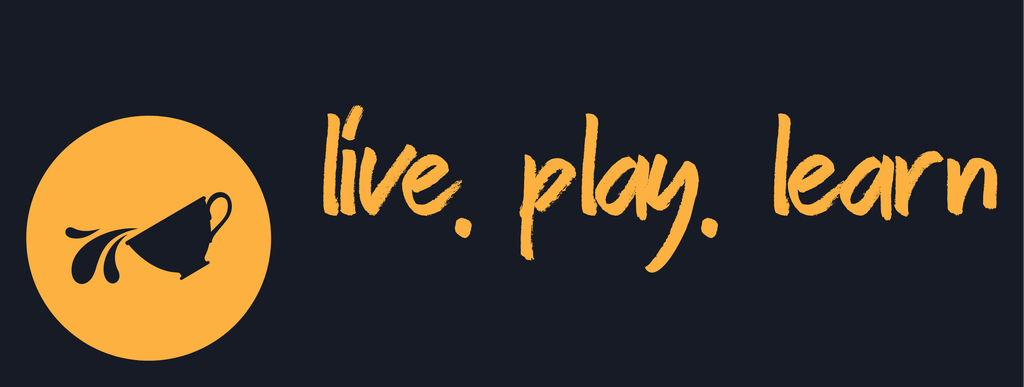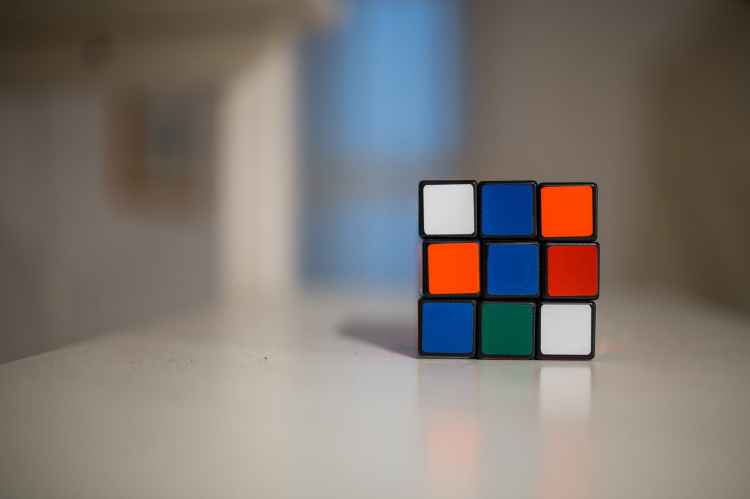Unschooling Reading and Maths: Challenging our Fears, by Heidi Steel

Unschooling, in its most basic form, is living a life without school. It challenges us, as adults, to consider what learning looks like without school and whether conventional methods of tuition are necessary for learning to occur. Often our deepest assumptions are challenged when we consider how our children will learn to read or learn maths. Even when we become confident in trusting the natural learning process in all other areas; even when we accept that learning happens all the time; and even when we follow our children’s own interests, these are the two subjects that we often feel most compelled to intervene with. However, for Unschooling to be successful, we must be willing to consider that being immersed in the world will support every aspect of their learning, including reading and maths.
Our apprehensive attitude and reservations need to be examined. We need to ask ourselves where our concerns originate and explore their validity. Is it that we are worried that our children will get left behind? Is it that they won’t be able to learn without tuition? Or that they won’t want to learn to read or do maths at all? Or maybe that they won’t be able to pass an exam when they are sixteen? Think hard and ask yourself, why is it that I can-not trust reading and math to be learnt as part of the makeup of life?
Maths
Let’s begin by addressing our unease around Maths. Many adults have negative impressions as a direct result of their own experiences of learning maths in school. Years, indeed decades, of daily maths drills and tasks that were marked either correct or, more often, incorrect. Repeatedly failing and being asked to learn seemingly strange mathematical concepts and equations that had little relevance outside the classroom except for the final test. This qualification is deemed necessary as it is a core subject and our fear is compounded because of its elevated status.
We worry that our children will be in the same position, that maths will be difficult to learn and they must, therefore, begin systematic learning of all its components as soon as possible. But what if, instead of doing more maths in the same structured coerced fashion, we seemingly do less of it? Maths is in fact everywhere. Our lives are littered with it: numbers, patterns, shape, space, time, money, calculations, finding things out, problem solving, these are all mathematical skills, and we use them every day.
“Everything I am interested in, from cooking to electronics is related to math. In real life you don’t have to worry about integrating math into other subjects.In real life, math already is integrated into everything else.”
Anna Hoffstrom

When you play games and change the rules or make up your own games, you are doing maths. When you bake and need to adjust the recipe to feed the correct number of people, you are doing maths. When you have to work out a schedule and what time to be at a certain place and how long it will take you to get there and how much it will cost, you are doing maths. When our children play Hide and Seek and count to 10, 20, 100, they are doing maths. When they calculate how many trees they need to mine, so that they can gather wood for planks, to craft into half slabs, to finish their chicken house in Minecraft, they are doing maths. Our brains play with numbers and see how they work together and fit together naturally as part of our daily life.
Children naturally learn maths because it contributes to their understanding of the world. Fundamentally, this is what maths is, a method of describing the world around us and how it works. Even advanced mathematics is less about working with calculations and more reliant on knowing how to learn.
If we take a step back and look at our day to day lives we will see that we are immersed in maths. Our houses are rich with mathematical tools such as rulers and tape measures and clocks and Lego, calendars and history books and sand timers and telephones and calculators. It is concrete, physical and practical maths that allows us to experiment with numbers and concepts with the ability to get things wrong and try again free from shame. It flows naturally through our lives and isn’t something that is feared.
The thing that is frequently lacking in curriculum based maths materials is understanding the why of the mathematical concept. When it has purpose in the real world or our children are interested in the underlying story of discovery then it has meaning and becomes useful and memorable.
…math is not particularly difficult. There is nothing magical about it. You do not need some natural gift beyond that of a normal human brain to do it. Nor does it require the thousands of hours of study that we try to force upon school children.
Peter Gray, Psychology Today Freedom to Learn Blog, April 15 2010

And if our children should need to take that exam they will find that they do not require 18 years of systematic tuition to be able to do so. Their own intrinsic motivation will give them the impetus they need to build on the mathematical knowledge and understanding that they inevitably have. It might even be that you have a child who particularly enjoys mathematical concepts and actively seeks mathematical problems and ideas.
Maths becomes something that our children do because their lives require it and it is free from the fear of getting it wrong because it is always supported by caring adults and there is time and space to rework and rethink and try again and play around with the ideas and problems until they come together. It is free from the stigma that so many adults carry around with them and can actually be enjoyable.
Reading
By comparison, fears surrounding reading usually rooted in concerns that our children will be left behind and fail to learn much at all without the ability to read.
Reading is a seemingly complex business. Educators have argued endlessly for decades about the best teaching methods and programmes to use in schools. It is the first academic endeavour that our children embark on when they enter school. From the first day that they attend school formal reading is paramount.
It is imperative in classrooms where education is delivered to large numbers of children en masse that they are able to read. It enables children to work independently and be able to record their learning on worksheets and tests as a way of assessing their progress and achievement. Schools lack the resources to provide individual tuition or support large numbers of children who are unable to read. And so, conventional education requires children to be able to quickly acquire a reading skill to compensate for this.
Unfortunately, a large number of children struggle with this premature interjection in their life. Forcing a child to read when they are not ready is cognitively damaging and amongst other things sends them a message that there is something wrong with them. It pains me to write those words. For years I was the teacher who was teaching each new intake of children to read. Every year there were children who would flourish and grasp reading almost instantly, then there were others who persevered and began to read gradually and then there were others who were, I now understand, not developmentally ready. One of the real tragedies of this for the children is that they were then required to take extra lessons in reading (something that they were by now somewhere between disassociated from or actively adverse to) whilst simultaneously being withdrawn from lessons and activities which they have far more interest in.
In Unschooling we can avoid debates over reading curriculums and preferred reading schemes. Reading can be accomplished, in contrast to many standard arguments, through immersion and participation in the real world. We can avoid arbitrary reading goals and coerced learning and embrace our children’s individually unfolding paths. Our children will innately know how they prefer to learn and we will be there to answer their questions as and when they arise. “What does that say?” “Read this story with me”. “That’s the same word as that one”. “There’s McDonalds’.” “Is Buh for Banana?” “I’m going to read to you now.” Are all common phrases used in our house.
“In a literate population, it is really not that difficult to transmit literacy from one person to another.”
Carol Black, A Thousand Rivers

When our children are actively involved in our lives, literacy is unavoidable. We read books and magazines and newspapers, we read menus and road signs and instruction manuals, we read ingredients and subtitles and slogans. We read. Our culture is one immersed in literacy and reading is inter-woven into the fabric of our lives. And their experience of stories or text books is not limited to a prescribed scheme. When our children want to read a book beyond their reading capability then we can read it to them. The same occurs with fiction books. Our children’s comprehension and understanding of complex story lines is not reliant upon their ability to read for themselves.
There is also a whole world of other things that can be learned without reading. Children can create plays and ride bikes and build complex structures. They can manipulate play-doh and paint pictures, sew and, watch films and documentaries. Their learning of anything else is not reliant or dependent upon their ability to read because their brains are built to remember things and make connections between all the information that they are gathering. And when that information is held in a book or plaque or sign then our children are surrounded by literate people who are willing to read it to them.
“Taken to its logical conclusion, viewing families as communities of literacy practice recasts reading, not as a cognitive skill to be addressed through the metaphors of personal acquisition, but as a social practice that is carried out and is meaningful within a particular social and cultural setting. Considering families as communities of practice is a way of contextualising learning at home so that children can be seen as becoming participants in the literate world that already exists around them.”
Harriet Patterson, Rethinking Learning to Read, 2016
And our children will find their own reason to read and their own way to learn how to do it and they will do it in their own timing. Peter Gray records that children to learn to read naturally anywhere between the age of 4 to 14 years old. Yet it does not ultimately effect intellectual aptitude, in fact comparisons made by children in their mid-teens showed that children who read later show greater comprehension and enjoyment of reading than those taught earlier.

Students began their first real reading at a remarkably wide range of ages—from as young as age 4 to as old as age 14. Some students learned very quickly, going from apparently complete non-reading to fluent reading in a matter of weeks; others learned much more slowly. A few learned in a conscious manner, systematically working on phonics and asking for help along the way. Others just “picked it up.”
Peter Gray, Psychology Today Freedom To Learn Blog, February 24, 2010
Conclusion
Reading and maths are both evident in our daily lives. Ultimately this is why they are deemed as core subjects in mainstream education. They are unavoidable and as such Unschooling families have a plethora of opportunities to immerse themselves in literate and numerate tasks and activities whilst honouring our children’s own cognitive pathways, personal interest and freedom to explore how and when they want to.
Unschooling means that we will support our children in their natural interests and pursuits. We trust that they will know best when to delve deeper into something and when to work at something repeatedly. As dividing up subjects is not a concern in the real world, when we look closely, we will see that both reading and maths (and a whole manner of other ‘subjects’) are present in any activity or pursuit. To overcome your own fears, I would suggest that you look closely at what your child is doing and identify, not only the literacy and mathematical elements, but also the joy that they demonstrate whilst they are immersed in their own learning.
Our children have the opportunity to become adults who are able to read for pleasure and approach mathematical problems and calculations with confidence. They can be free from the shame and fears that many adults have in relation to reading and maths, once we challenge our own fears and embrace a new learning pathway for ourselves and our children.
Follow Heidi Steel
Heidi Steel is an ex-teacher turned unschooler who moved beyond the traditional paradigms of the classroom when she became disillusioned with the education system.
You can follow her blog at www.LivePlayLearn.org

